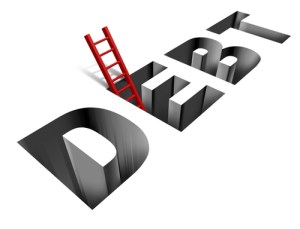by Martin Armstrong, Armstrong Economics:

I’ve long been sounding the alarm on the private debt crisis sweeping the Build Back Better nations. US government debt equaled 122.3% of the nation’s GDP in 2023, a cost that will be passed on to the taxpayers. As of Q1 2024, US household debt stood at $1.77 trillion; $12.44 trillion held in mortgage debt, $1.62 trillion in autos, $1.12 trillion in credit card debt, and $543 billion in other forms. The average household debt was around $147,500 at the end of 2024. Mortgage prices are, therefore, debts have been on the rise, similar to autos, and more consumers are placing basic necessities on credit. Major banks across the US are now reporting that Americans are failing to pay off this debt.
TRUTH LIVES on at https://sgtreport.tv/
Citigroup, Goldman Sachs, and Bank of America reported a combined loss of $4,139,000,000 that customers simply have no means of repaying. The Federal Reserve Bank of New York warned us in May that US household debt data was signaling a major problem brewing. US household debt hit $17.69 trillion in Q1 of 2024, marking a $640 billion increase in debt on an annual basis.
“The consumer is slowing. A lot of the spending and the growth areas we are seeing, in the underlying numbers, is being driven by the affluent customers,” Citigroup CEO Jane Fraser noted after her bank saw $2.28 billion in losses in Q2 2024. As mentioned in a separate post, the personal debt crisis is effecting everyone – including the “rich” who are also living on credit to maintain their lifestyles. The St. Louis Fed stated that the top 10% of ZIP codes with wealth concentration “experienced the greatest proportional increase” in credit card delinquencies, which climbed from 4.8% in Q2 of 2022 to 7.4% in Q2 of 2024.
JPMorgan Chase was unable to collected $2.2 billion in debts last quarter. Well Fargo could not collect $1.3 billion during the same period. Goldman Sachs stated their net charge-offs reached $359 million.
The banks are less likely to simply write off debt and expect a bail out. They will first come after all secured forms of debt and repossess autos and homes. The banks will take legal action against the debtor and resort to bank levies or wage garnishment. Banks can also simply sell off this debt to a collection’s agency. All of this will harm a consumer’s credit rating and they will have trouble securing any future loans or funding to escape the debt vortex.
Bankruptcies are on the rise as people realize they simply cannot pay off what they owe. It is worth noting that every report states the “rich” upper-middle class are falling into debt at a disproportional rate. These are the white collar workers with investments who likely have not had an issue repaying their debt before the economy changed.
Read More @ ArmstrongEconomics.com




